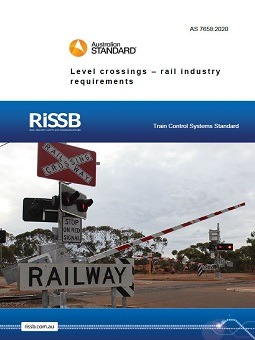This standard provides the rail industry with a set of requirements and recommendations to be used to control level crossing risks, and to promote a consistent treatment of level crossings.
This Standard:
- provides a uniform basis for compliance with Rail Safety National Law;
- complements the requirements of the road rules in each jurisdiction in relation to level crossings;
- covers differing rail operations across Australia;
- recommends the process and requirements for the application of new technology;
- provides a basis for the evaluation of changes to railway operations that affect the risks, and;
- identifies the hazards and associated risks associated with level crossings.
This Standard applies to new and upgraded level crossings and may be applied by rail infrastructure managers (RIM) against existing level crossings.
This standard specifies minimum operational and engineering requirements of the life cycle of a level crossing. Note that all level crossings must comply with Rail Safety National Law and all stakeholders, including the rail infrastructure manager (RIM) and road manger, need to ensure compliance with that law.
The requirements for level crossing traffic control devices for road users in this Standard are intended to supplement details already prescribed in AS 1742.7
Level crossings contribute to the risks of railway operation. Grade separation of road and railway alignments is the preferred option where possible.
This standard applies to all railways over 600 mm track gauge, including rail freight and passenger networks, heritage and tourist railways and cane railways where appropriate. Whilst not mandated, light rail organisations may adopt this Standard if appropriate to do so.




